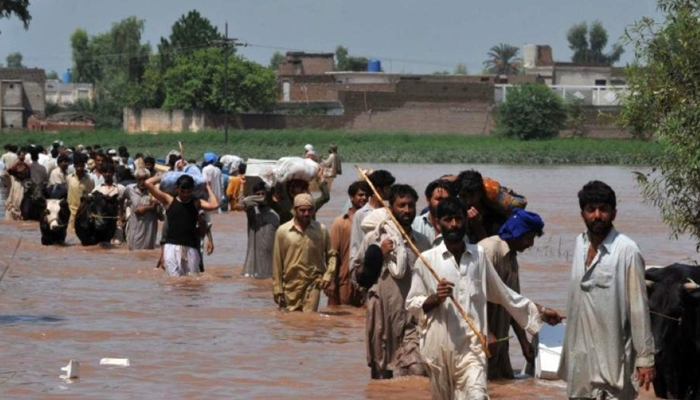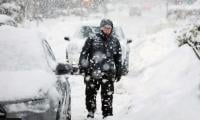Who is responsible for climate refugees?: Part - I
The Earth’s climate has been fluctuating countless times in the past 800,000 years (NRDC, 2021). It is an issue that has proved nearly impossible to counter considering the lack of effectiveness in various methods and solutions.
This remains one of the world’s major problems since it has had drastic effects on every community in the world in one way or in the extreme other. A shocking impact is that large numbers of people are moving from their homelands due to climatic disasters which have made it difficult for them to live courtesy loss of home and means of earning which leaves them with no other option. These people are ‘climate refugees’.
There are many factors which lead to forced migration. Journalist Olivia Giovetti has identified the following to be the most common: war, political unrest, expulsion of ethnic minorities and climate change caused disasters. OCHA services have reported the latter to be the most common due to an increase in natural disasters. The World Bank warns that in 2050 there will be about 200 million climate refugees.
The generation of power, manufacturing goods in factories, cutting down forests, using transportation, producing goods, and powering buildings as identified by the UN are causes of climate change. These activities conducted by humans bring changes in precipitation patterns, droughts, heatwaves, hurricanes, increase in sea levels, and melting of glaciers. The UN provides data such that is recognized on an international level by many countries, however the research is not recent and some changes might have been made today.
The emergence of refugees is majorly caused by floods, wildfires and storms which have displaced 24.2 million people, which is three times more than the number of displaced persons caused by conflict, according to the website: Down to Earth. It can be concluded that humans are guilty of causing indirect harm to themselves which is proven by the effects and causes of climate change.
Displaced people live in ‘climate change hotspots’, which are prone to natural disasters that compromise their security once more. The UNHCR has warned that this may even push towards a secondary displacement. This is because of an increase in the demand for basic necessities like food and water between the refugee and host communities. The Sahel region in Western Africa has temperatures increasing by 1.5 times quicker than the rest of the world which creates problems affecting the agricultural sector which is a main source of income for the population.
The New Yorker points out that governments in the US, Europe and Asia have criminalized migrations thus hindering resettlement of asylum seekers. ‘No place to Flee’ by William Pollack and Joseph Wartman highlights that climate refugees in a host country are pushed by the governments to live on “marginal lands such as ravines or hill slopes that others have avoided because of their precarious settings”.
The New Yorker further points out that when the intensity of storms increases, the make-shift tents set up by these refugees are destroyed. Migration expert Amali Tower suggests that governments should develop their climate policies if they want to survive in the long run. According to the Brookings Institution, if such matters escalate or remain the same, the international community will have to deal with the following consequences: further increase in demand for food and water in areas such as the Middle East and North Africa, increase in migration as well as in disease outbreaks and problems in the US border.
Pakistan has been a victim of climate change itself, affected by floods, earthquakes, typhoons and droughts. As home to over 2.5 million displaced refugees which are majorly from Afghanistan, there is an overflow of displaced persons in areas susceptible to natural disasters. More than 1,700 lives have been taken away by these disasters in Pakistan since November 2022.
The government claims that there are over 33 million who have been affected by flash floods which destroyed their houses, crops and land. Within these communities, diseases such as diarrhea, typhoid, malaria and cholera have spread amongst families many of whom are unable to get medical treatment. As a country with a crippling economy, it is difficult for Pakistan to provide adequate help to every victim impacted by these seemingly never-ending disasters, which ultimately begs the question: is Pakistan responsible for the climate change it faces today?
European Union data shows that Pakistan makes barely 1.0 per cent of the world’s carbon emissions yet faces the blunt of the issue. The Global Climate Risk Index states it is the eighth most vulnerable country when it comes to the climate crisis. Around $10 billion is estimated to cater to the lives destroyed and infrastructure damaged. Countries such as the US are providing aid, but it is insufficient due to the high cost of the bill. Recovery could possibly take many years which would be further delayed by another disaster delaying the recovery.
Additionally, the world temperature increasing by 2 degrees Celsius further adds to the risk, making it nearly impossible to overcome the concern. Despite all this, countries like Pakistan have to pay the price of carbon emissions by other countries.
In order to narrow down the main culprits contributing to climate change, carbon emissions made by countries can be taken into account. The IPCC has recognized this to be the most dominant factor in causing global warming and consequently climate change.
The carbon index of countries varies greatly. The highest contributors ranked by Worldometer are China with more than 10.4 billion tons of CO2 emissions and USA with more than 5.0 billion tons of CO2 emissions in 2016 alone. The World Bank database pointed out that 82 per cent of the world’s total CO2 emissions are produced by 20 countries alone. It seems that, to these countries, their economic growth matters more than the suffering of millions across the world.
Even though climate refugees are more in number when compared to refugees caused by conflict, they remain unprotected by international law since they do not qualify for protection under the 1951 Geneva Convention. The policies related to climate change revolve around mitigation but do not focus on the loss and damage already caused by it.
In 2016, the UNHCR explained the lack of recognition of climate refugees in international policies as well as country policies on refugees to be a major reason why the problem is alarming, and also why ‘liable countries’ are found mistreating climate refugees.
To be continued...
The writer is a student and was part of Harvard’s Journalism Academy in 2022.
-
 Apple CEO Tim Cook Reportedly Plans To Step Down
Apple CEO Tim Cook Reportedly Plans To Step Down -
 Orlando Bloom Must 'up His Game' Amid Sofia Vergara Romance Rumours
Orlando Bloom Must 'up His Game' Amid Sofia Vergara Romance Rumours -
 Meghan Trainor's Husband Daryl Sabara Responds To Ashley Tisdale's Mom Group Comments
Meghan Trainor's Husband Daryl Sabara Responds To Ashley Tisdale's Mom Group Comments -
 Gunnar, Matt Nelson Ready To 'set The Record Straight' On Their Dad Ricky's Tragic Death
Gunnar, Matt Nelson Ready To 'set The Record Straight' On Their Dad Ricky's Tragic Death -
 Palace Insiders Warn King Charles Ahead Of Prince Harry's UK Trip
Palace Insiders Warn King Charles Ahead Of Prince Harry's UK Trip -
 February Full Moon 2026: Snow Moon Date, Time And Visibility
February Full Moon 2026: Snow Moon Date, Time And Visibility -
 Kat Dennings Opens Up About Being Body Scanned By Major Studio
Kat Dennings Opens Up About Being Body Scanned By Major Studio -
 Joe Keery Shares Advice To Apologize To A Woman
Joe Keery Shares Advice To Apologize To A Woman -
 Prince William, Kate Middleton Will Inherit Throne 'sooner Rather Than Later' Amid King Charles Health Concerns
Prince William, Kate Middleton Will Inherit Throne 'sooner Rather Than Later' Amid King Charles Health Concerns -
 GTA 6: What’s Really Happening As Insider Pushes Back On Delay Rumours?
GTA 6: What’s Really Happening As Insider Pushes Back On Delay Rumours? -
 Jennifer Aniston Sparks Concern With Intense Workout
Jennifer Aniston Sparks Concern With Intense Workout -
 King Charles, Prince Harry 'extremely Unlikely' To Meet During Duke's Upcoming Trip To Britain
King Charles, Prince Harry 'extremely Unlikely' To Meet During Duke's Upcoming Trip To Britain -
 Apple IPhone Fold May Feature Samsung Crease-less Display
Apple IPhone Fold May Feature Samsung Crease-less Display -
 Brooklyn Beckham Reconciles With Grandparents Amid Ongoing Rift With Parents
Brooklyn Beckham Reconciles With Grandparents Amid Ongoing Rift With Parents -
 Storm Goretti Leaves Widespread Power Outages Across France, Britain
Storm Goretti Leaves Widespread Power Outages Across France, Britain -
 Kate Middleton Marks 44th Birthday With Emotional Reflection Of Cancer Journey
Kate Middleton Marks 44th Birthday With Emotional Reflection Of Cancer Journey




